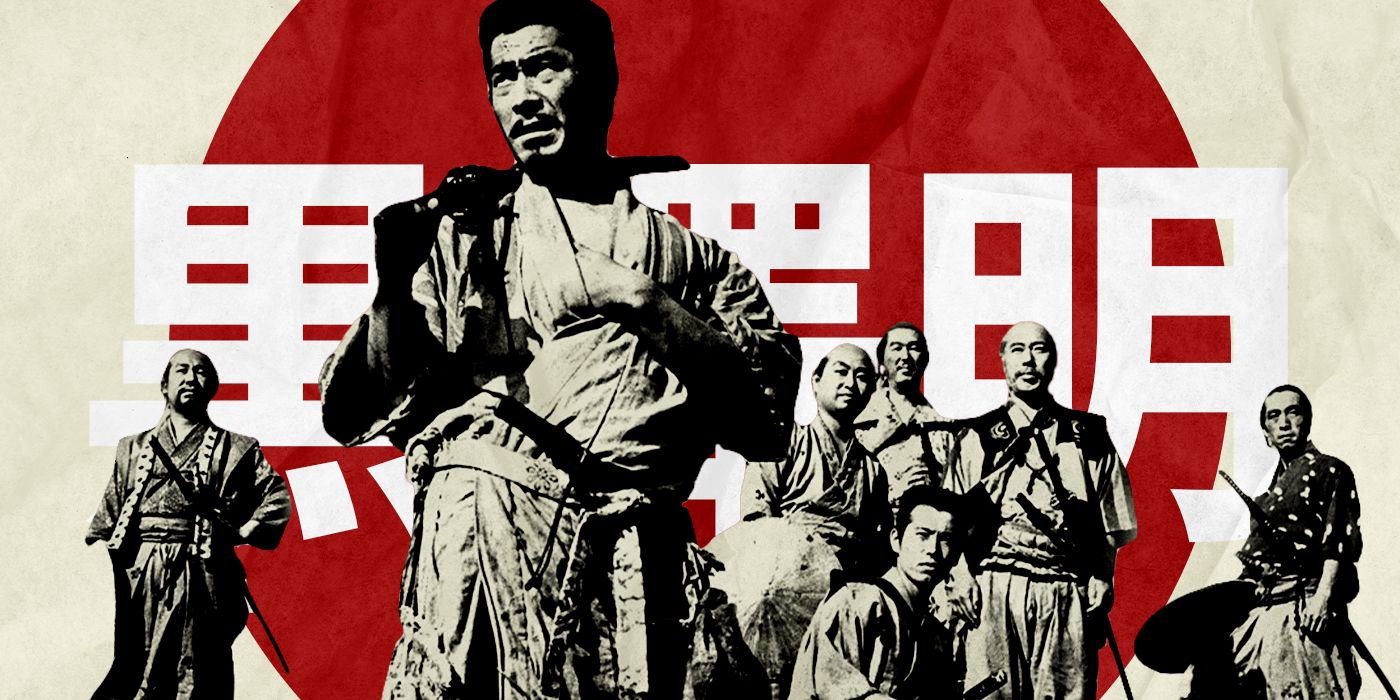
The Big Picture
- Collider’s Jason Gorber sat down with
Ultraman: Rising
co-directors Shannon Tindle and John Aoshima to discuss the Netflix movie. -
Ultraman: Rising
explores Ultraman’s paternal side, as baseball star Ken Sato cares for an abandoned Kaiju. - During this interview, the filmmakers discuss aiming to bridge cultures and create a globally relevant story while respecting Japanese specificity, as well as navigated fan expectations by balancing fan lore with their personal storytelling approach.
For over two decades, Shannon Tindle, along with his co-director and former schoolmate John Aoshima, have been trying to bring the story that evolved into Ultraman: Rising to the big screen. The two share decades of animation experience, from having shepherded the early development of Kubo and the Two Strings at Laika and other projects at Sony Animation, where this particular project was originally developed. After leaving Sony, the two partnered with Netflix, and what was originally titled Made in Japan evolved to tie the tale into the lore of the legendary Ultraman, the beloved character created by Eiji Tsuburaya and his collaborators that has thrived for half a century in films, live-action tokusatsu programs, manga, and other forms of storytelling.
This latest take on Ultraman showcases the character’s paternal side. When L.A. Dodgers star Ken Sato (Christopher Sean in the English dub) moves back to his native Japan in order to take up the mantle left by his ailing father (Gedde Watanabe), he soon finds himself caring for a young, abandoned Kaiju who has imprinted on the costumed hero.
In this first of three interviews with the creative team behind Ultraman: Rising, Collider spoke with the directors from within the hallowed halls of Industrial Light and Magic, the special effects powerhouse whose creative team helped bring the sights and sounds of Ultraman’s world to life. Given George Lucas’ own fascination with Japanese culture and characters, it was more than fitting to have a statue of the gallant Ultraman sharing floor space with other familiar icons like Yoda, C-3P0, and the Samurai-inspired Darth Vader costume. We discussed the filmmakers’ deep connection to the character and the challenges of taking such a legendary hero in a different direction.
Bringing a Film to Life Decades in the Making
“I love the fact that I have this opportunity to share that experience and to allow new audiences to discover Ultraman.”
COLLIDER: Congratulations on the film that’s been decades in the making. I’m wondering what it feels like to finally be able to share this story with audiences around the world?
SHANNON TINDLE: It’s pretty incredible, especially when you actually get to sit in a theater and see it with people. Netflix has been very supportive, and while they made it for streaming, we made this film the same way that you would any kind of theatrical release. [It’s wonderful] to be able to sit in an audience or with people who’ve seen it and then to get feedback, to get notes from people online to see what the film means to them. Those are the things you don’t think of when you’re making it, but always lovely to hear and to read.
I’m wondering if you could discuss your own connection with the lore of Ultraman and how this story not only fulfills fan expectations but also your personal storytelling journey.
JOHN AOSHIMA: I was born in Japan and raised by my grandparents in Japan. Ultraman was already all around me. I would see references in mangas. I soon quickly discovered the show on television, and all the kids in the neighborhood school were watching it. So, just like any child in Japan or in Asia, we grew up with it. I have the nostalgia of that childhood memory with Ultraman being my first hero, and so I love the fact that I have this opportunity to share that experience and to allow new audiences to discover Ultraman as well around the world.
Some people are super suspicious about people “coming in”, about the whole notion of taking something from another culture. But often what happens is you actually see a property like this or a character like this, and this leads you to deeper discoveries. Could you talk about your own emotional journey, but also, as a filmmaker, your direct connection with how Ultraman opened up this entire world of cinema and culture?
TINDLE: It was Ultraman and Gatchaman, which was called Battle of the Planets where I grew up, that were my first introduction to Japanese culture. They caused an interest in me to study Asian culture. I studied Mandarin in high school and later after college. My Japanese is not anywhere near as good as my Mandarin used to be! I understand some Japanese now.
AOSHIMA: You watched so much anime and Japanese cinema!
TINDLE: I learned a lot from being in meetings with Tsuburaya Productions! After college, I started to study the work of Kurosawa and Kobayashi and watch films from all over the world. Pop culture brought me into a world that I didn’t experience growing up in a rural town in Kentucky. And that’s what stories can do, right? They invite you in and make you curious. Even if you can’t afford to physically travel someplace, cinema is a big eye-opener for people who hope to understand people and cultures better. Cinema allows you to do that in a way where you don’t even have to leave your own country, while hopefully, it encourages you to get out there and engage with people who are different from themselves.
Bringing the Cultural Gap and Creating an Authentic, Globally Relevant Story
Kurosawa bridged the gap between the so-called divide between East and West. I’m just wondering how much you incorporate that into this because you’re making an internationally seen film that has incredible notions of specificity from Japan but also working on a global stage. Could you talk about the challenges of bridging that divide from a storytelling point of view but also just a general narrative and directorial outlook?
TINDLE: What’s funny, too, about Kurosawa was he was criticized by Japanese film critics for being too Western!
AOSHIMA: Yeah.
TINDLE: We know that the characters are huge in many parts of Asia. So, how do we bring this film to the world? But also, we always wanted to represent the culture respectfully because we wanted people to see themselves in the film. We did it, first of all, by telling a story that we felt was a universal one of parents and children and the difficulties that they have. We then worked with our internal team to make sure that we had corrected the specificities of the culture and the city and what the vibe felt like to really enrich that experience so that it’s not just a big, loud superhero movie.
AOSHIMA: We worked very closely with Tsuburaya. It was an opportunity for them, as well, to really bring out Ultraman onto the world stage again. It’s a great honor to tell this story, and I was challenged with living up to the legacy of the character. But I knew that Shannon and I were both coming from that childhood connection, and we both wanted to tell a universal story as a gateway to draw in the audience and then let them discover Ultraman the way we did.

Related
The 20 Best Movies Directed by Akira Kurosawa, Ranked According to Letterboxd
The best of the best.
The film is about making connections between disparate elements. You’re literally connecting a Kaiju to a hero, thus transforming the way we look at things, and in a fundamental way. You guys bringing an outside perspective to this entire franchise is performing that kind of navigation. How much do these elements or fan expectations ever challenge you in terms of storytelling? Is there anxiety? Or, at some point in time, do you have to turn all that noise off and just say you’re going to do your own story in your own way?
TINDLE: That anxiety was never on for me. When the film began, it wasn’t an Ultraman story. It was called Made in Japan, and we were going to make it at Sony. When we parted ways with Sony, they were very gracious and let me take that idea out. We brought it to Netflix, and they asked, “What if we could get the rights to Ultraman,” because they knew that’s what my story was inspired by. So, at that point, you’re so invested in telling this personal story that I have to find that balance for myself between being a fan and being a filmmaker and telling a story.
The rules were always that if the lore enhances the story that we’re telling, we will lean all the way into it. If it’s an element distracting from the story or if it’s confusing for people who don’t know anything about Ultraman, then it doesn’t make it in. I first became aware [of the challenges with navigating fan expectations] when people were seeing the teasers and making negative comments. I’ve got a really thick skin, but I did want to win them over. We won over many of those folks with the film. They say, “I know I said these things about the trailer, but whenever I watched the film, I see that there’s a deep love and respect for Ultraman.” So, I think we were able to find the balance, at least from the response that we’ve gotten, the majority of which has been very positive.
How the Filmmakers Navigated Fan Expectations
We live in interesting times when a lot of fans are so demanding ownership of the characters and to hold expectations about who they are. Could you talk about your own personal challenges in developing this, of not being overwhelmed by what was there and ensuring that you were laser-focused on actually making sure that the story is told the way you wanted to tell it, not the way people are asking you to tell it?
AOSHIMA: It was really all about tapping into what Ultraman meant for me. I talked about the nostalgia aspect for my childhood — the character is my childhood hero, the very first one. When I heard about what Shannon wanted to do with this theme of parenthood, about a father and son relationship, it held a very universal connection. It involved a long discussion about how to infuse our love of the character. So, we were coming from that fandom and from our own hearts, striving to convey the very idea of what it means to be Ultraman.
Well you succeeded tremendously. Thank you guys so much. Congratulations on the film. I’m so glad we got to see it in a way that it’s meant to be showcased.
TINDLE: Thanks so much!
Ultraman: Rising is available to stream on Netflix now.
Watch on Netflix







